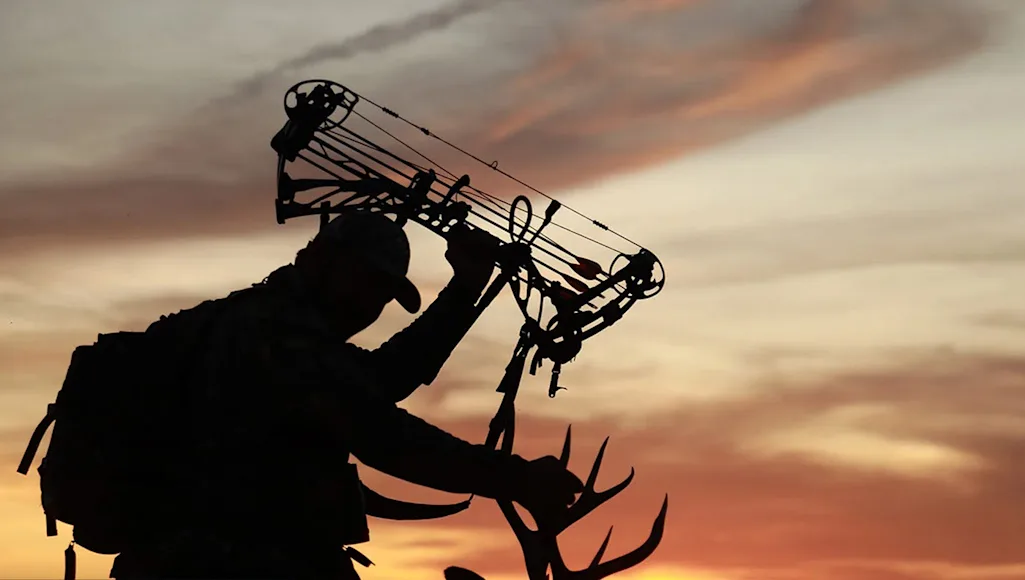_We may earn revenue from the products available on this page and participate in affiliate programs. Learn more ›
_
You can kill big game with an original Allen Speedster or a Dukes-era Martin Wart Hog if you want, but ever since Hollis Wilbur Allen patented that first compound bow in 1969, and since Bo and Luke blew up their first outhouse, modern bow technology has advanced at a breakneck pace. Whereas today’s longbow looks much like those from the late Pleistocene, today’s compounds barely resemble those of just a couple of decades ago. And they shoot much, much better.
Over the last few decades, compound bow efficiencies have soared. A speed bow of yesteryear with hard cams and a demanding draw cycle might have had an IBO rating of 290 fps. Today’s smooth bows routinely go 330 fps IBO, and the flamethrowers threaten 360. That’s a huge difference. Improved materials and components means today’s bows are quieter and smoother-shooting, too.
So, you want a good compound bow? First and foremost, get a new or recent model. You don’t have to drop a grand or more on this year’s flagship; the latest mid-priced bows are often better than the top models from only five or six years ago. Just get something fairly new, and you’ll be happy you did.
No matter where you shop, bows aren’t cheap. You can buy two sub-MOA-guaranteed rifles for the price of a new flagship compound bow. So, before you reach for your wallet, you want to make sure you’re getting the right bow for you. Here’s everything you need to know and consider to do just that.
Forget the Marketing Hype About Bows
The first thing you need to do, before you even begin shopping, is clear your mind of any marketing nonsense that may have wormed its way into your subconscious. It’s the job of every bow company to convince you to buy their product, and no one blames them for trying. But you need to go into the process knowing that their efforts might involve a certain amount of hype—or even straight-up b.s.
For example, not terribly long ago I read a certain bow company’s ad copy that described one model’s long 7.5-inch brace height as “extremely forgiving” and another’s short 6-inch brace height as “offering extreme forgiveness.” What a load. Then there’s the TV hunter schilling for brand X—and hoping you don’t remember that he shot Brand Y last year (when they offered the better sponsorship deal). And sure enough, some brands do win more shooting competitions, but they happen to be the same ones that sponsor the most shooters.
When choosing a bow for yourself, ignore the marketing hype and go shoot as many makes and models as you can. Go to several dealers. Skip stores where you can’t shoot. Try your buddy’s bows if they have similar specs as you. Decide for yourself what you like. Then, and only then, should you plunk down your money.
Don’t Be a Fanboy When Buying a Compound Bow
Brand loyalty makes sense. If you shell out for a chainsaw or a pickup truck and both it and its maker serve you well, you have every reason to buy that brand again. But in archery we have something more than just loyal customers. We have fanboys, so convinced of their pet brand’s superiority that all other bows are “junk” by comparison, never mind that they’ve never seriously shot any of the other bows.
It’s the wrong mindset to have when you’re choosing a new bow.
I know because I’ve shot all the other bows. Every year, F&S editors test all the new flagship models for Field & Stream’s annual bow test and Best of the Best Awards. And what we’ve learned is that (1) pretty much all of the biggest players make a heck of a good bow; (2) the practical differences between the brands’ top models is fairly small; and (3) which brand is at the very top of heap changes regularly. Years back, Mathews and Hoyt dominated. For a while, it was all Bowtech and Elite. Then Obsession, Prime, and Xpedition had a run. Now Mathews and Hoyt and PSE are on top. And it’ll change again, and again.
Your pet brand probably makes a great bow. But that doesn’t mean another company isn’t offering a better bow this year. So shop smart—and don’t be a fanboy.
Understand Compound Bow Speed Vs. Shootability
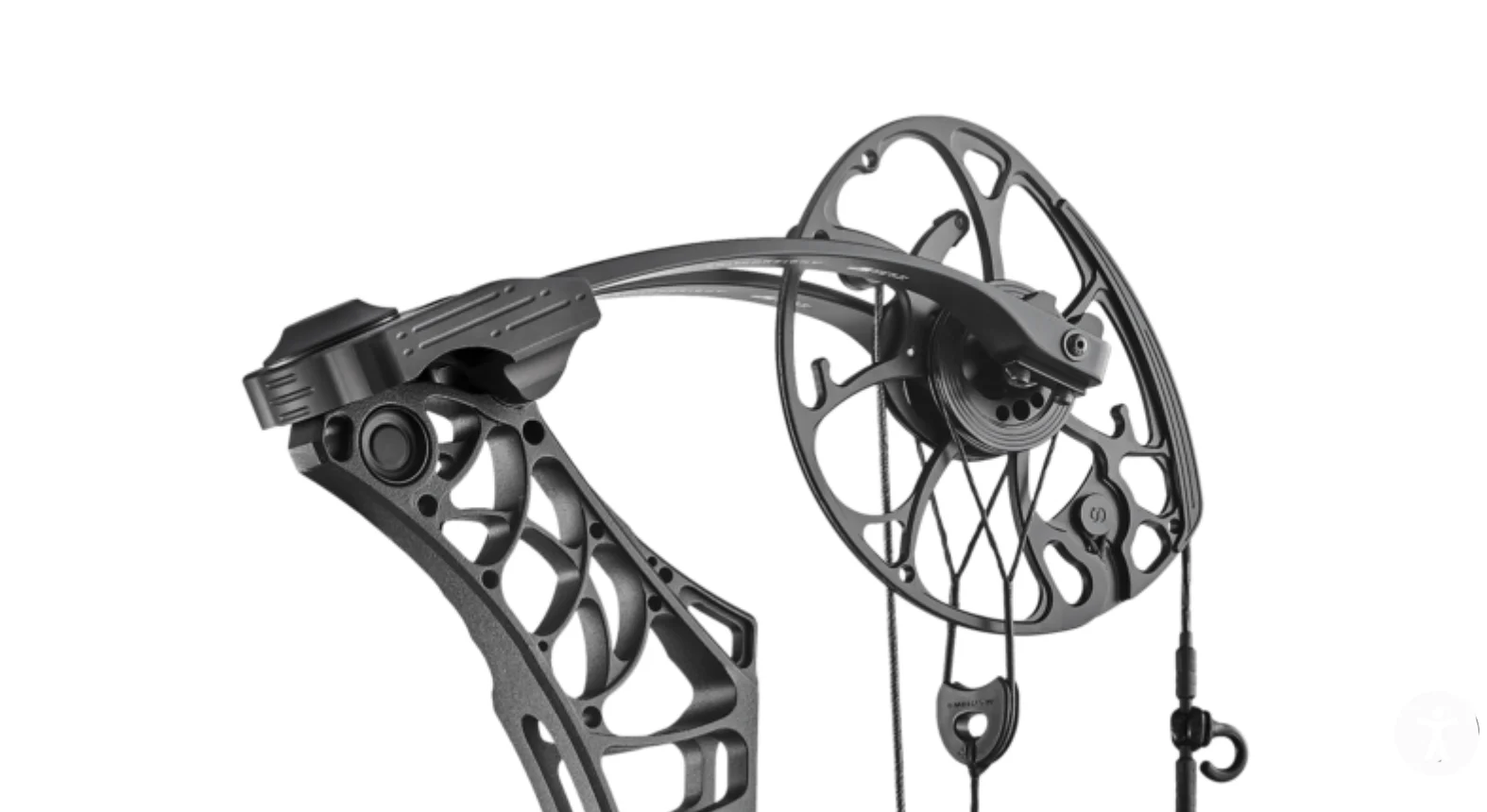
Mathew’s CrossCentric cam system is one of the most efficient on the market today. Mathews
When comparing bows, everyone talks speed vs. shootability. “Speed” is simple: How fast does that sucker fling an arrow? “Shootability” is a ridiculous non-word invented by marketing people that nevertheless popularly refers to the ease with which a bow is drawn and fired: Ooh, that’s smooth.
As a general rule, more speed means less shootablity, and vice versa. It’s a trade-off, and the wild card is you. If you can shoot a hard-to-draw, hard-to-hold blazing-fast bow and still be hell on wheels on the range and in the deer woods, more power to you (literally). On the other hand, a slower, easier-shooting bow can help you keep your form together, especially when your knees are knocking. In other words, there is no perfect bow—only a perfect bow for you.
Now, with all of that said, there is another key factor, and it’s called bow efficiency. A bow is a simple pulley-and-lever system; the energy you get out is proportional to the energy you put it. Some compounds, however, are more efficient at transferring that energy, and therefore give you more power/speed with less effort (all else being equal).
In this year’s F&S annual bow test, the bows that finished near the bottom of our rankings had efficiencies between 78 and 80 percent, while those that finished near the top had efficiencies between 80 and 86 percent. That’s because high-efficiency bows produce the best combination of speed and shootability. And that’s what you want.
Unfortunately, bow companies do not typically advertise bow efficiency. But you will feel its effect when you shoot and compare bows. You want the fastest bow that’s still relatively easy for you to handle and shoot well.
Read Next: The Best New Compound Hunting Bows of the Year
Test Every Compound Bow You Can

When you’re shopping for a bow, it helps to shoot a lot of different brands. Elite Archery
If you’re going to shop for your perfect bow, you need to know what to look for—and how to look for it. Here’s are nine things you should test for with every bow you pick up.
1. Fit and Finish
Grab a bow off the shelf and look closely at the materials and workmanship. Are the limb pockets plastic (okay) or aluminum (better)? Is the riser cast (okay), or extruded, forged, or machined from a single billet (better)? Are the cutouts clean and smooth? Is the finish uniform; does it seem durable? Do you like the way the bow looks?
2. Draw Cycle
Ask the shop owner if you can draw the bow, and then do so several times, slowly. Ideally, the motion will feel even and smooth, with a minimum of grittiness or bumps in the road as the cam turns over. Don’t expect a fast bow to draw like a slow one. The idea is to compare bows of similar specs.
3. Back Wall
Draw the bow again, all the way back until it stops. Now, how does that stop feel? Hard and solid, like you’ve hit a concrete wall? Or a little soft and spongy? Most shooters, especially hunters, prefer the former.
4. Valley
From the back wall, start to ease up a little. In simple terms, the valley determines how much you can relax at full draw before the string suddenly let’s down. Speed bows tend to have a “steep” or “narrow” valley, meaning they jerk your arm forward at the slightest relaxation. Slower bows are apt to have a “generous” or “wide” valley, meaning they offer more leeway, which many hunters prefer.
5. Shock and Vibration
Now ask to shoot the bow. Step close to the target so you’re sure to hit it. Then close your eyes, shoot, and concentrate on what you feel in your bow hand. Some models, especially light and fast ones, will jump a little and/or vibrate noticeably. The less of both the better. A bow with no noticeable shock or vibration is called “dead in the hand.”
6. Noise
Shoot with your eyes closed again, and this time listen carefully. Some bows are noticeably quieter. Even some very fast bows. For hunting, the quieter the better.
7. Balance, Handling, and Grip
These are pretty simple and somewhat related. Basically, when you shoot the bow, does it feel good in your hand? Does it balance naturally or list a little this way or that? Is it easy to get on target; does it settle there or jump around? Grip is highly personal, but thin ones are in vogue and seem to reduce torque.
8. Speed
For now, just look at the manufacturer’s IBO rating, usually listed on the bow. This number is almost always a little inflated, but it typically makes for a serviceable apples-to-apples comparison.
9. Accuracy and Forgiveness
**Read Next: Best New Budget Bows of the 2022 Archery Trade Show
**
These are important but difficult to test while shopping, so let’s delve further first.
Understand Bow Accuracy
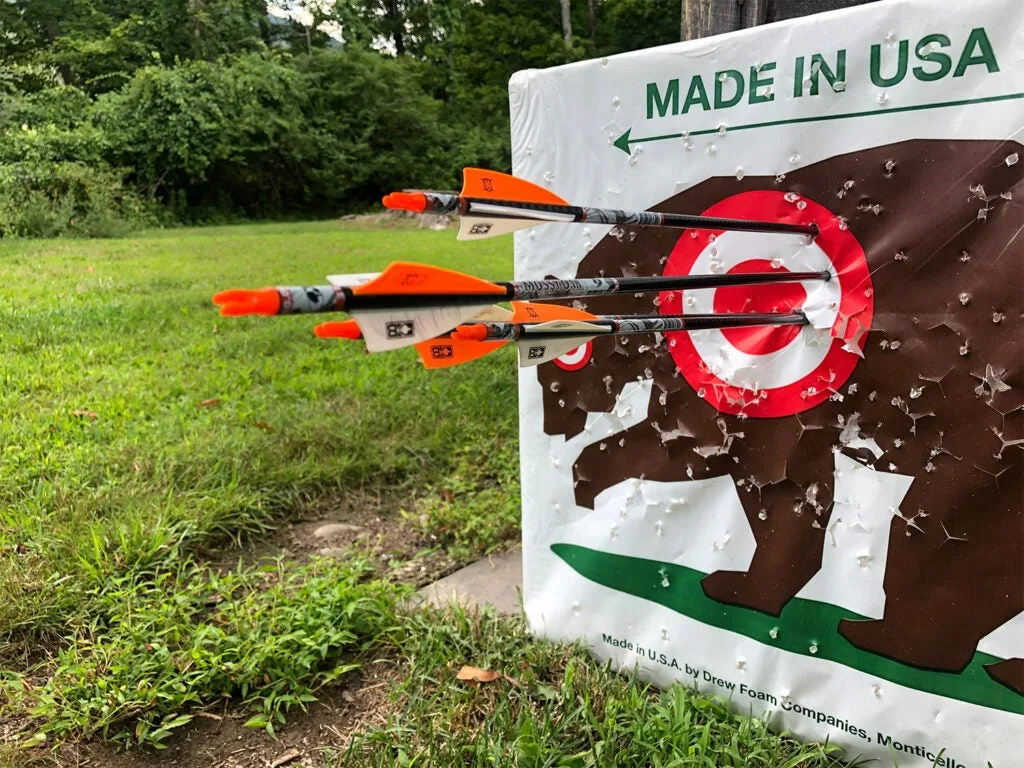
Bow accuracy is different than rifle accuracy. Matthew Every
Of course you want an accurate bow. Everyone does. But what exactly does that mean? It’s natural to think of bow accuracy as you might rifle accuracy. But it’s a bad idea, because they are very different.
In riflery, you can reasonably discuss inherent accuracy because you can put a rifle on a benchrest, shoot a variety of ammo, and pretty much find out what the thing is capable of. Some will shoot sub-MOA; others won’t, and that’s that.
Although you can test bows with a Hooter Shooter (a machine that fires arrows with perfect consistency, removing the human element), it doesn’t really tell you anything. Because when you do, you learn that almost any bow can be tuned to hit virtually the same hole time and again. So, don’t worry about the bow’s accuracy. Worry about your accuracy with a given bow.
Understand Bow Forgiveness (and Read F&S)
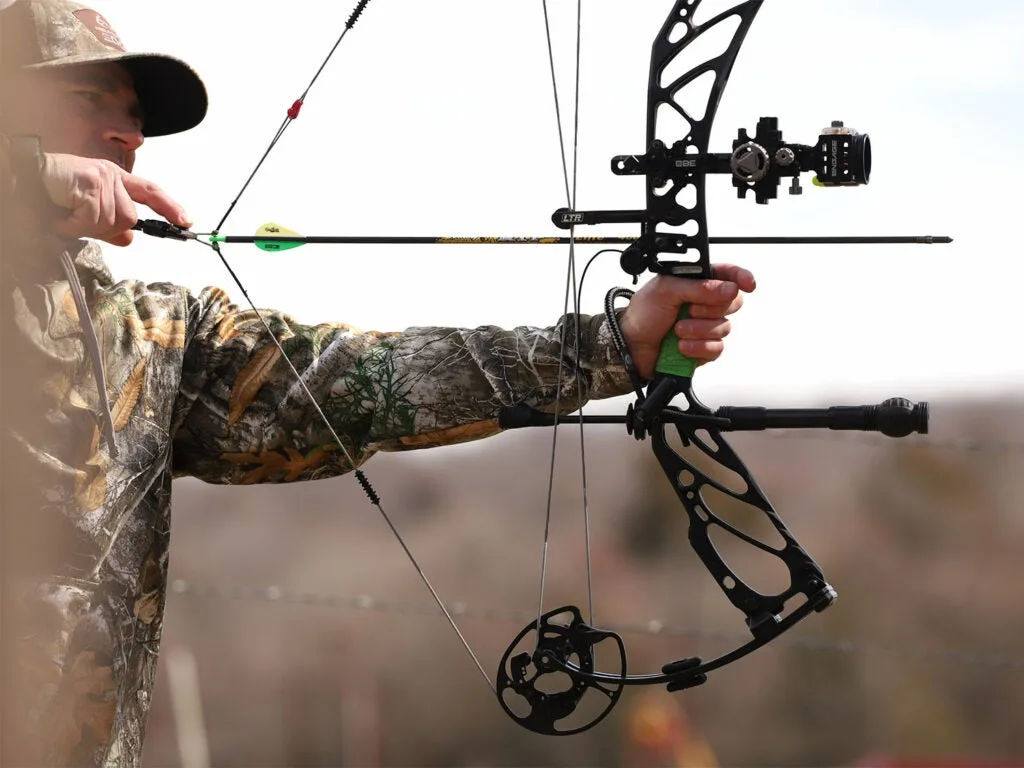
Testing the “forgiveness” of a bow is difficult for the average shooter to do, but we test the latest bows for this every year in our annual bow test. Elite Archery
Bow forgiveness is a marketing department’s dream. It has the benefit of being both unequivocally good—who doesn’t want forgiveness?—and impossible to quantify. And so, hucksters have flogged the term senseless. Company X’s latest model is not only extremely forgiving but even more extremely forgiving than all their other extremely forgiving models. It’s all baloney.
Instead, let’s look at real-world forgiveness, to the extent that it exists. And let’s start by getting our terms straight: “forgiving” and “easy to shoot” (as in comfortable) do not mean the same thing, even though many bowhunters and bow companies use them interchangeably. What “forgiving” actually means here is “easy to shoot well” (as in accurately). A forgiving bow, by definition, is one that forgives minor mistakes in shooting form in execution.
The best way to test bow forgiveness is to get several different shooters—each with slightly different shooting form and making slightly different shooting errors—to shoot groups at a single distance with all the latest compound bows.
This is pretty much impossible for the average shopper to pull off, but it is exactly what we do every year when we test compound bows. And what we find every year is that not only do some bows shoot better than others; they do so with obvious consistency between the shooters. In other words, they are more forgiving of a variety of shooter screw-ups. And we are not afraid to name names. So, the easiest way to know which of the year’s top bows are most forgiving is to read the annual F&S/Outdoor Life bow test
. But you can also get a rough idea of both accuracy and forgiveness at a good bow shop.
Shoot at the Bow Shop by Looking Past the Peep
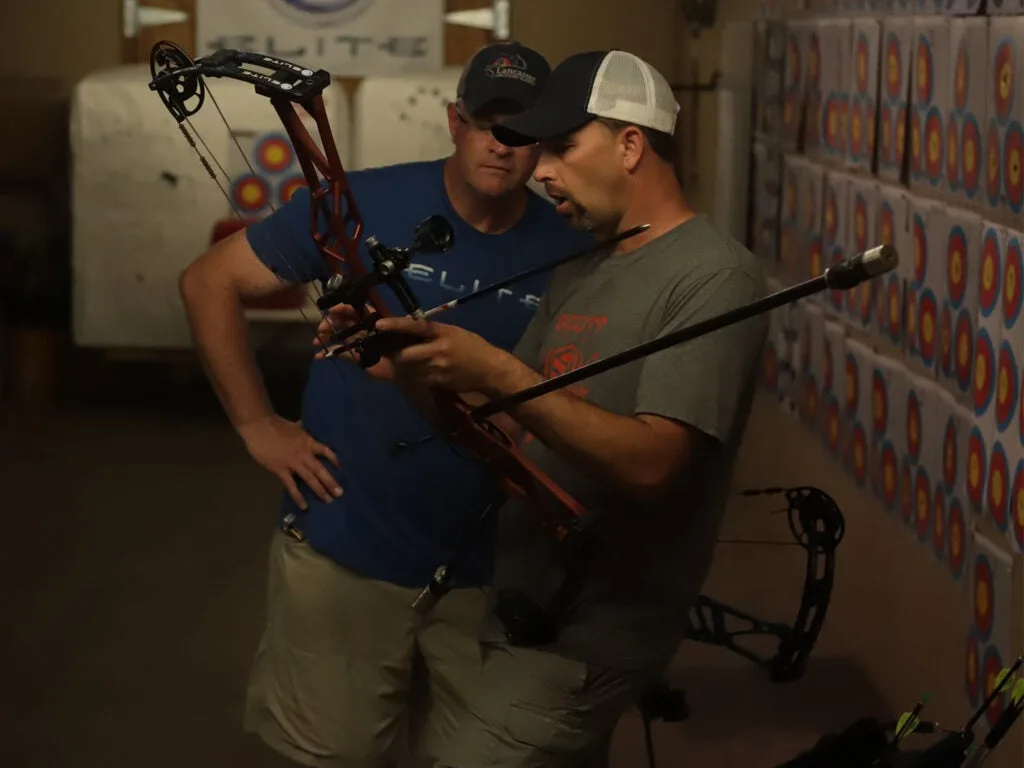
Visit your local bow shop when business is slow so you can shoot a variety of bows at your draw length. Elite Archery
It’s far from perfect, but you can get a decent feel for how well you shoot various bows at a shop despite the fact they are not set up specifically for you. The best retailers have a 20-yard or longer shooting range and carry an assortment of models already set up with D-loops, accessories, and a good basic tune. From there, all you need is the correct draw length and peep-sight placement. The former takes only a few minutes in most cases, especially as more and more companies get away from draw-length-specific cams. If you go when the shop is slow (midday, midweek), most pros will do this for you.
Changing the peep height can be a snap, too, if it needs only a slight adjustment. Otherwise, just ignore it. You don’t need a peep to shoot accurately. Simply anchor up as usual, line the top pin with the edge of the string in the same place each time, and start shooting groups. Don’t worry where the arrow hits in relation to the bull; just compare the groups from bow to bow. Again, it isn’t perfect, but this is the best you can do at most shops (and far better than you can do at most big box stores), and it will give you a pretty good sense of which bows feel and shoot best for you.
**Read Next: The Best New Broadheads of the Year
**
Get What You Pay For in a Bow
Okay, let’s get down to brass tacks. How much should you pay, and what should you get for your money? Well, new bows tend to fall into one of three categories: flagship bows, mid-line bows, and budget bows, plus a subset of budget bows known as high-adjustability bows. Here’s a rundown of each.
Buy a Flagship Bow

Hoyt’s new Carbon RX-7 is an example of a flagship bow that is both fast and smooth-shooting.
This is a company’s top-of-the-line model. Today’s flagships run anywhere from around $1,000 to more than $1,700, with the average being around $1,150. For that amount of money, the riser should be machined from a single block of aluminum or made of carbon. The bow should have a roller guard, and besides the strings, cables, dampeners and the like, it should have all metal parts (no plastic). It should sport all of the company’s latest tech, including its highest-performing and most efficient cams. And the fit and finish should be impeccable.
The IBO speed should be around 330 fps or better, and the bow should be a joy to shoot. Consider the last two winners of the annual F&S test. Last year’s winner, the Mathews VXR 28 was among the fastest model and won the draw cycle portion of the test. This year’s winning model, the Hoyt Carbon RX-7 was the second-fastest bow in the test and tied for the best draw cycle. In other words, the very best flagship bows—the sort you want—should impress you both in terms of speed and shootability.
Buy a Mid-Line Bow

Mid-line bows usually run in the $700 to $900 range and provide near-flagship performance. That’s because these bows are very often made of components from recent flagship models. Two perfect example are the Xpedition Archery’s APX
, which has and IBO rating of 340 fps, and the Bowtech Carbon Zion
, which has a carbon riser and an IBO of 335 fps for just $799. A mid-line bow is apt to be missing a metal roller guard and other top-end components. The fit and finish may be one step down. But performance can be right near the top, for a significant discount.
Buy a Budget Bow

We’ve been testing budget-priced bows for years. Generally, $500 or $600 is our cap (with a few exceptions), and while these bows never quite match the performance of flagship or mid-line bows, we are perennially blown away at how good they are for the price.
Many budget bows have a cast riser and plastic cable guard. Most are slower by at least 10 to 15 fps, often because they have older cam systems. The draw cycle may feel a bit bumpy or gritty, and there may be a little extra buzz after the shot.
For some shoppers, these distinctions are huge. But in most real-world hunting scenarios, they simply don’t make a huge difference. You can kill deer all day with a $500 bow. Two budget bows I’ve shot quite a lot and have been very impressed with are the Mission MXR, which features the same CrossCentric cam technology as Mathews’ flagship models, and the Elite Ember, which is especially well-built for the price and highly adjustable (see below). In short, if all you can afford is a budget model, there’s no reason to feel handicapped. These bows are absolutely up to the job, and they present a fantastic value.
Get a Bow that Grows
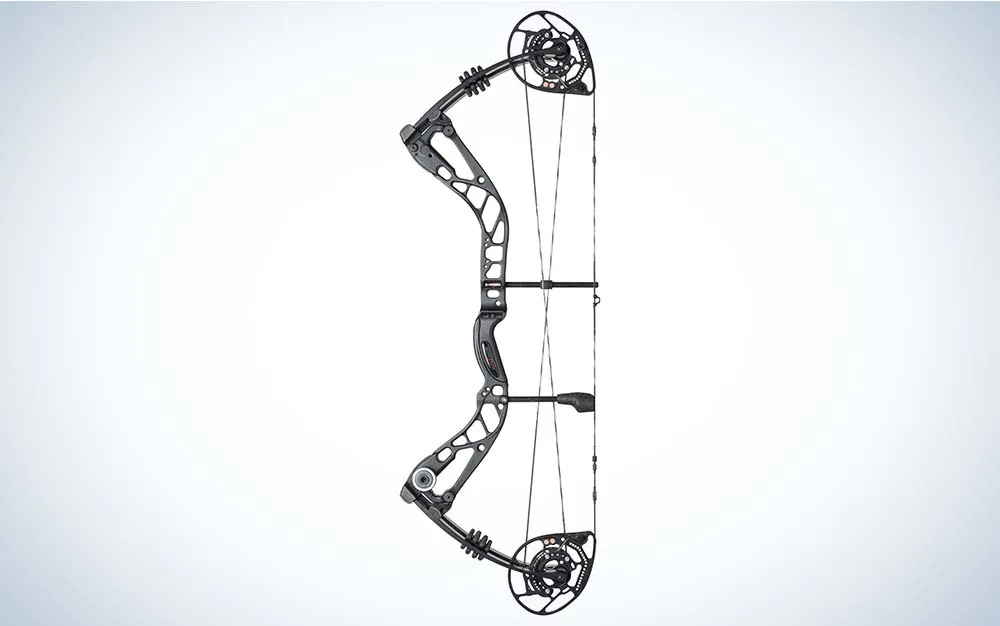
If you could buy shoes that grow with your kid you would, right? That’s why bows featuring extreme adjustability are so popular. How popular? The Diamond Infinite Edge series—a perfect example of the type, made by Bowtech—are the company’s best-selling bows ever. Draw weights can typically be set anywhere from 5 to 70 pounds, and draw lengths usually range from 13 to 30 inches, with no need for extra modules or a bow press. In other words, with the turn of a few screws, these bows can be set up for anyone in the family and can grow with any young or new shooter. And most of these bows are under $500, some well under.
Sounds great. And it is. But that doesn’t mean you should rush out and get one.
High-adjustability bows fill an important niche to a tee; they are just about perfect for youngsters coming up, for multiple young shooters in a family, and for some adult newcomers. Generally speaking, they offer more than enough power and accuracy for hunting at modest ranges. But they do have some drawbacks. Priced for beginners, their lower-end materials, as well as all that adjustability, puts limits on performance. And sized for beginners, they tend to be particularly short and light, which isn’t the ideal combination for accuracy. The ones I’ve shot—which is most, if not all—have not been especially forgiving, as a rule.
So be smart. If you don’t need a bow that grows, spend your money on higher-end performance and forgiveness. On the other hand, if you can put all that remarkable adjustability to good use, it can be worth every penny. Two high-adjustability bows that I’ve shot recently and really like—because they have more aluminum and less plastic and because they shoot like quality non-high-adjustability bows—are the previously mentioned Elite Ember and the Bowtech Amplify.
Get a Used Bow
Believe it or not, many modern bowhunters routinely offload last year’s top model for today’s latest and greatest. As a result, you can find a lot of killer used bows at bargain prices. You can shop online (eBay has lots of used bows), but your local pro shop is a better option, because you can carefully inspect and shoot the bow before buying it. A pro shop commonly includes set up and tuning costs in the deal, too.
When shopping, give any used bow a careful inspection. Make sure strings and cables are in good shape, as replacement costs can add $100 or more to a seemingly smoking deal. Worn strings look fuzzy, but be especially on the lookout for nicks or cuts. Examine the bottom edge of the lower cam for damage from resting against hard surfaces. Inspect limbs for cracks or splits. Run a cotton ball over each limb surface; snagged white fuzz indicates a problem. If the limbs are compromised at all, you should walk away. Check the draw length and draw-length adjustability. Most recent-model bows are adjustable, but some may require an expensive replacement cam to change this, and the wrong draw length will ruin your accuracy.
Also look for quality accessories. Because dealers rarely give sellers extra money for sights, rests, and other additions, they don’t add much to the price, but they add a lot to the value.
Support Your Local Pro Shop
Whether you’re looking for a used or new bow, it’s a good idea to buy it from your local pro. Sure, if you have bow press at home, plus all the other tools and the technical knowledge, I can see how you might want to buy online. But pro shops provide much-needed expertise and services to local bowhunting communities in general, and they need our support.
If you don’t have all the tools and know-how, then it’s a no-brainer. You might save a few bucks on the bow itself by shopping at a big-box store or online, but then you’ll have to pay a pro to get it set up and tuned. If you buy from the local bow shop, however, the pro will usually throw that in or at least charge much less for it. Add to this the ability to shoot and compare bows and the pro’s expertise in guiding your choice and setting up your bow and accessories, and you can’t go wrong. And when you walk out the door, you’ll be ready to hit the field with a bow that is just right for you.

